by Rick Landers.
 |
|
Craig Lavin. Photo courtesy of Craig Lavin. |
Guitar International recently caught wind of a stunning blue guitar built by West Virginia luthier Andrew White that was on display at the Montreal Guitar Festival. A highlight of the guitar is the inlay work of Craig Lavin. A quick call to Lavin gave us the inside scoop regarding the collaborative design of a Powder Blue Tang fish and underwater landscape for the guitar.
Lavin explained, “Andrew wanted a showpiece for the Montreal Guitar Festival and he suggested an underwater reef scene going down the headstock, the neck and the bridge of the guitar. I’d always wanted to do a school of a single species of fish passing through the neck as a window to a wider view of the school. So, I selected an array of white river pearl, brown lip pearl, black Tahitian pearl, mother of pearl, gold pearl and green abalone to reflect the vibrant colors of the ocean and the Blue Tang fish. I decided to back it up with blue and light-blue acrylics and some blue dyed epoxy for backer, then drafted the design and went to work.”
Ten Steps to Inlay
1. Imagine something wonderful and draw the image and don’t limit your creativity to
traditional forms.
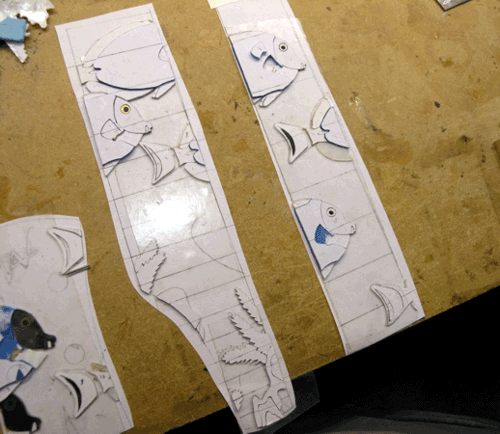 |
|
The design on paper. Photo courtesy of Craig Lavin. |
2. Draw the design out as a puzzle set and make 15 photocopies
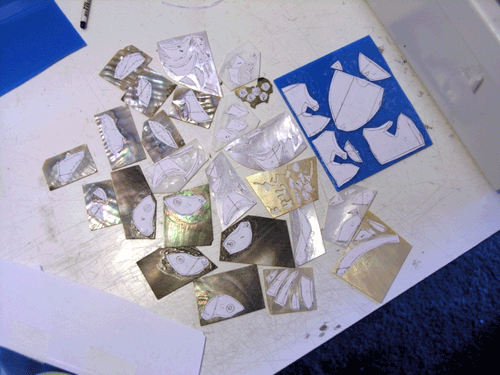 |
|
The inlay pieces. Photo courtesy of Craig Lavin. |
3. Layout the puzzle set on the inlay materials and glue them down. Lavin uses over 75 types
of inlay material.
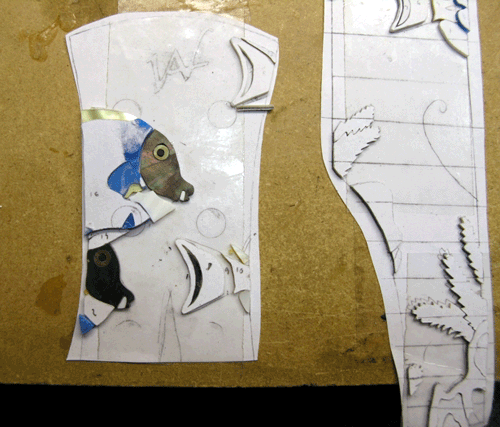 |
|
Headstock and fingerboard design work. Photo courtesy of Craig Lavin. |
4. Cut the inlay designs out with a hand jeweler’s saw and put them back together as a
completed puzzle.
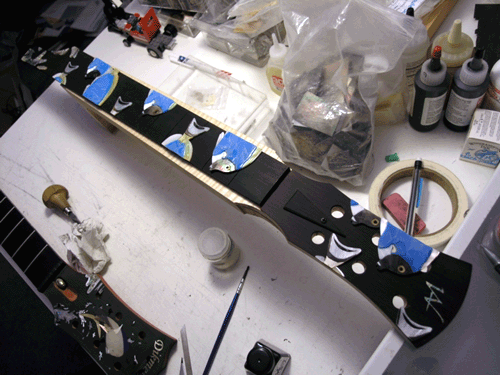 |
|
Full fingerboard cutouts. Photo courtesy of Craig Lavin. |
5. Place the puzzle over the workspace (headstock, fingerboard, etc.) and glue it into place.
 |
|
The fingerboard. Photo courtesy of Craig Lavin. |
6. Outline the inlay using a fine point scribe or exacto knife, then remove it.
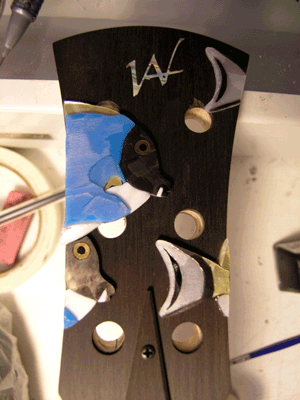 |
|
The headstock. Photo courtesy of Craig Lavin. |
7. Rout the inlay cavity as close to perfect as possible, then add the inlay to the cavity and
fill it with glue and let the glue dry overnight.
8. Level it out with 80 through 320 grit paper.
9. Once the inlay is flush, touch it up as needed, then engrave it by hand. This can take
another 20 or more hours depending on the detail level.
10. Carefully re-slot the fingerboard. One wrong move and you destroy the work. The same
goes for engraving. A mistake can only be sanded out so much so patience is key!
The inlay work for the Andrew White guitar took about 30 hours to lay out and finish using some basic tools including a jeweler’s saw, pencil and paper, super glue, and a graver tool. He routed the piece with a Foredom rotary tool and everything was completed meticulously and patiently by hand.
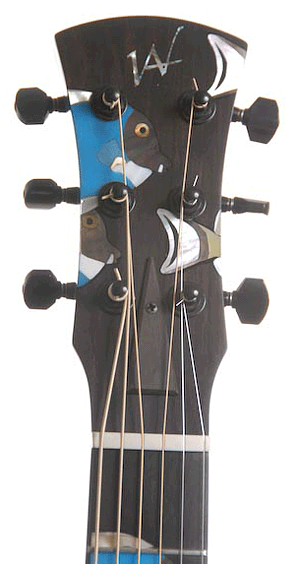 |
|
Finished headstock of the Andrew White guitar. Photo courtesy of Craig Lavin. |
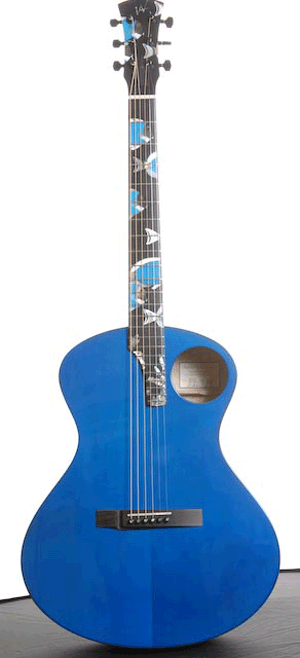 |
|
The finished Andrew White guitar. Photo courtesy of Craig Lavin. |
Related Links
Craig Lavin Custom Inlay
Andrew White Guitars